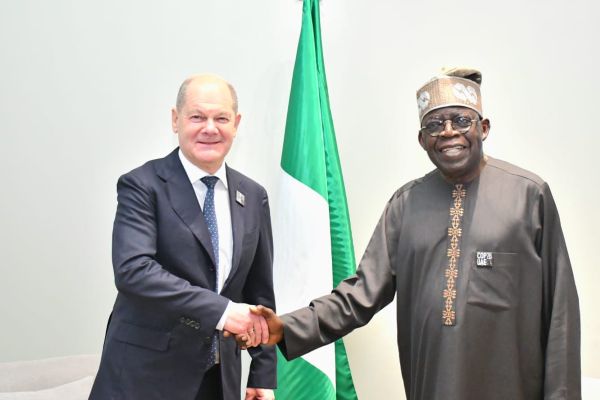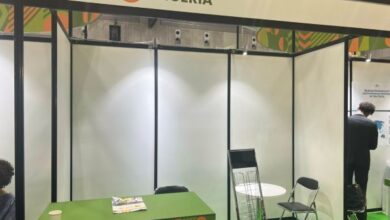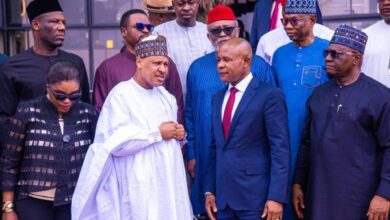Why FG’s intervention in Nigeria’s Siemens Power Deal is a big deal – Adelabu

“From paperwork to power flow: How Nigeria’s Siemens Power Project is finally gaining traction under Tinubu’s administration.”
In a country where power outages are a daily ordeal, transforming the electricity sector isn’t just a development goal — it’s an economic imperative.
Now, after years of slow movement and unmet expectations, Nigeria’s flagship Presidential Power Initiative (PPI) — also known as the Siemens Project — is showing signs of real acceleration. According to Minister of Power, Adebayo Adelabu, the administration of President Bola Tinubu has injected new energy, structure, and financing into the project — a development that could reshape Nigeria’s electricity landscape.
But how did we get here? And why does this matter to households, industries, and the future of Africa’s biggest economy?
Here’s a deep dive into the Siemens Project — its origins, progress, and the path ahead.
⚡ What Is the Siemens Power Project?
The Presidential Power Initiative (PPI) was born out of a 2018 bilateral agreement between Nigeria and Germany. The goal: to radically overhaul Nigeria’s electricity infrastructure — from generation to transmission to distribution — through a partnership with Siemens Energy.
The initiative was structured in three phases, aiming to increase operational capacity to 25,000MW — a bold ambition in a country where actual delivery often lingers below 5,000MW.
🧭 Why It Stalled — Until Now
For years, the PPI struggled to move beyond planning documents and goodwill pronouncements. Bureaucratic bottlenecks, delayed financing, and shifting government priorities kept the project in limbo.
That changed in 2023, with the swearing-in of the Tinubu administration. According to Minister Adelabu, one of the key turning points was the signing of an Acceleration Agreement with Siemens — a move that laid out fast-track implementation goals and cleared lingering administrative fog.
🚀 What’s Changed Under the Current Administration?
Since May 2023, the Siemens Project has entered execution mode, with several tangible shifts:
✅ New Technical Direction
- Siemens is now focused exclusively on transmission infrastructure under a turnkey model (full design, build, and delivery).
- Distribution upgrades will be handled by other top-tier EPC contractors with strong financing capacity.
✅ Transformers & Substations Delivered
- As part of the pilot phase, 10 transformers and 10 mobile substations were installed and energized across Nigeria by late 2023.
✅ Transmission Boost of 700MW
- FG’s Power Company has implemented projects that increased transmission wheeling capacity by over 700MW — benefitting industrial clusters, universities, and households.
✅ Target: 4,000MW Grid Expansion by 2026
- Under the new plan, grid capacity is expected to increase by 4,000MW by 2026, with an aspirational goal of 6,000MW, based on directives from the Economic Management Team.
🔍 Why This Matters to Nigerians and the Economy
Energy is the backbone of any modern economy. With reliable power, Nigeria can:
- 🔧 Revive moribund industries
- 👩🏽💻 Power digital transformation
- 🏭 Support local manufacturing
- 🏡 Improve quality of life
- 💼 Attract foreign direct investment
For businesses grappling with generator costs and productivity loss, the Siemens Project offers a potential turning point.
🏗️ Key Milestones to Watch in 2025 and Beyond
| Milestone | Expected Outcome |
| ✅ Pilot Phase Completion | Substations and transformers online |
| ⚙️ Main Phase Kickoff | EPC contractors mobilized |
| 💸 Financing Secured | New credit lines approved |
| 🔌 National Grid Boost | +4,000MW capacity by 2026 |
| 📊 Public Dashboard (proposed) | Transparency & tracking for citizens |
🧠 What Needs to Happen Next?
Despite recent wins, stakeholders say more is needed to fully unlock the benefits of the Siemens Project:
- Regulatory alignment across states and DISCOs
- Project monitoring to prevent elite capture
- Transparent communication with the public
- Workforce training to manage new infrastructure
As Minister Adelabu puts it:
“This isn’t just about megawatts. It’s about powering growth, jobs, and economic opportunity.”
The Bottom Line
After years of slow starts, Nigeria’s Siemens Power Project is finally hopefully picking up speed — thanks to political will, structural tweaks, and international cooperation. If the current momentum holds, the project could become a defining infrastructure success story for Nigeria in the decade ahead.
But the road is still long — and full of cables, towers, and grids.











